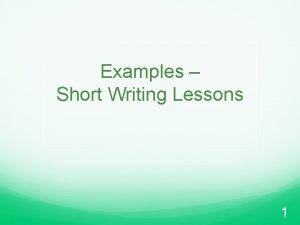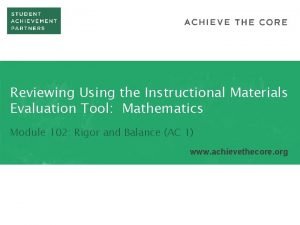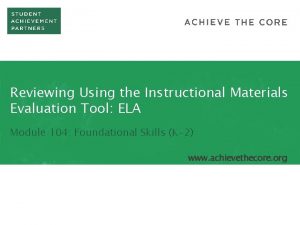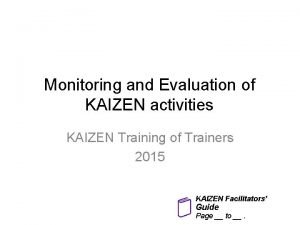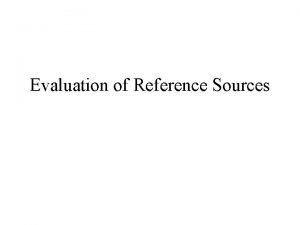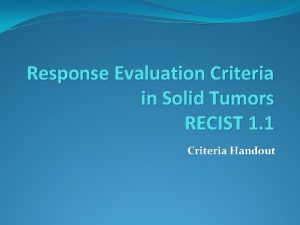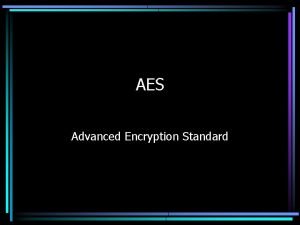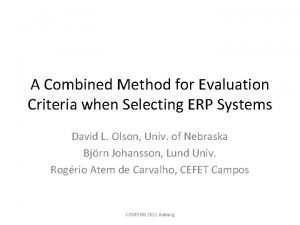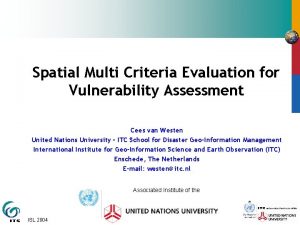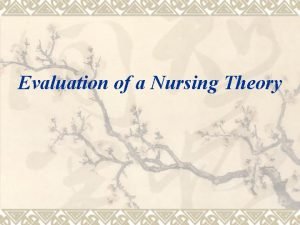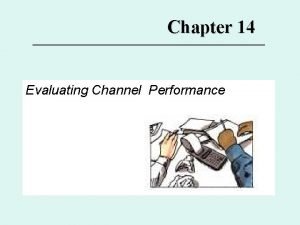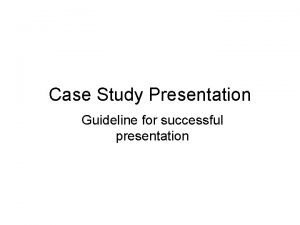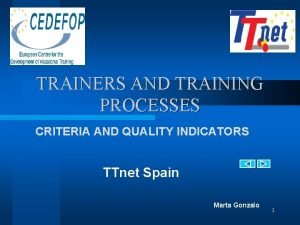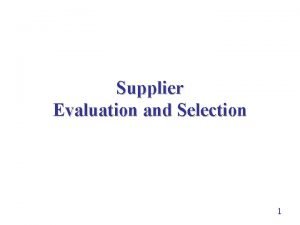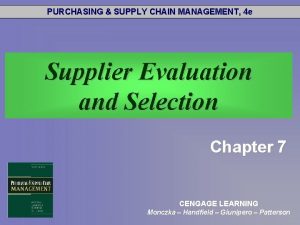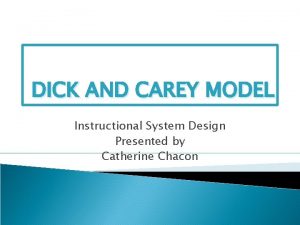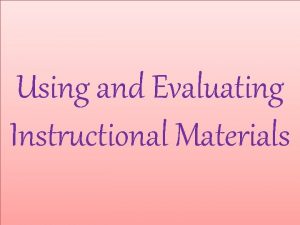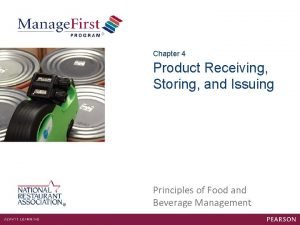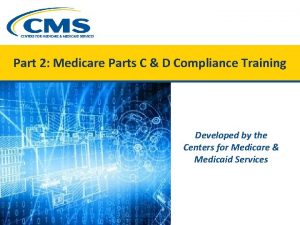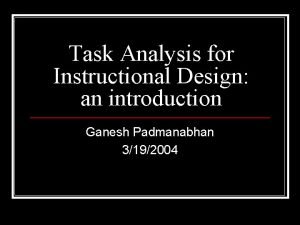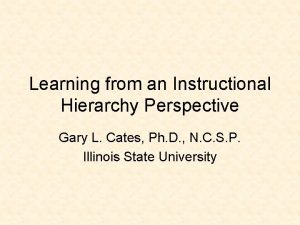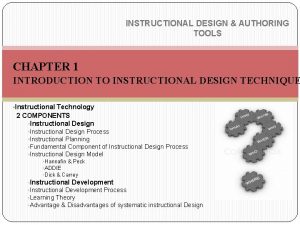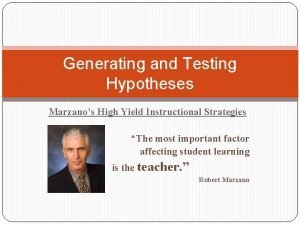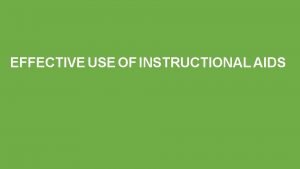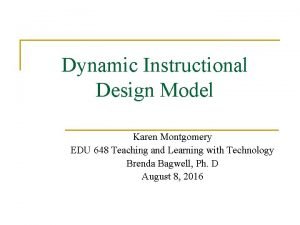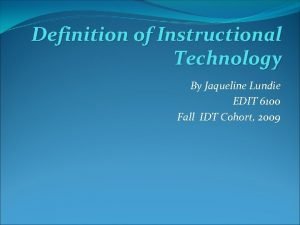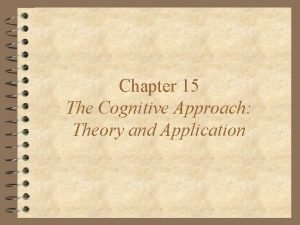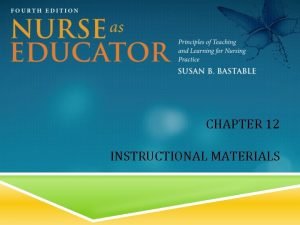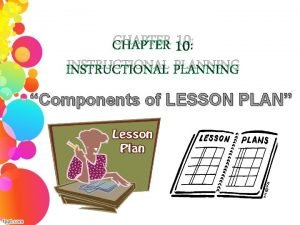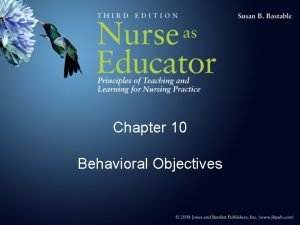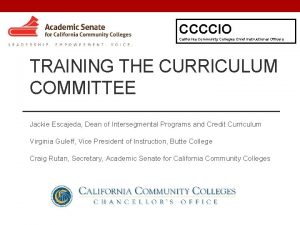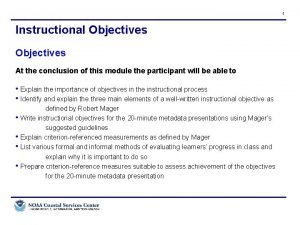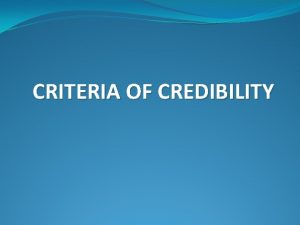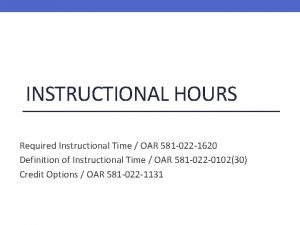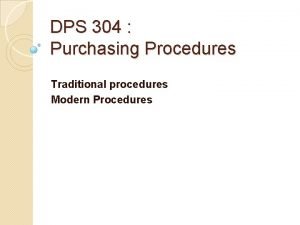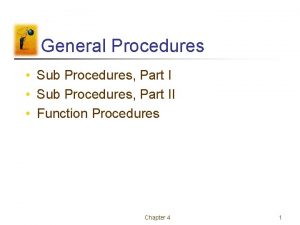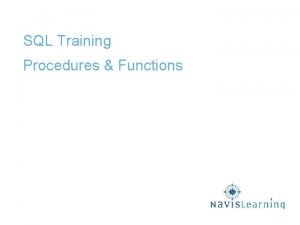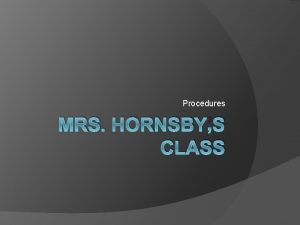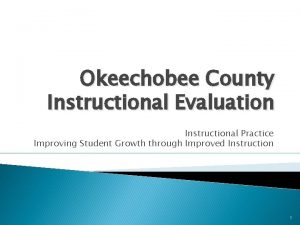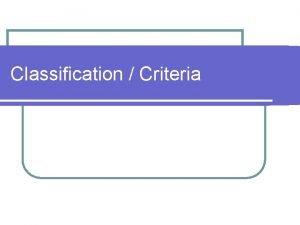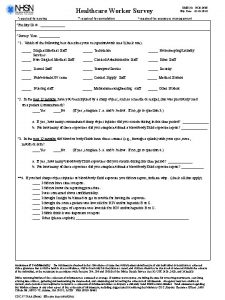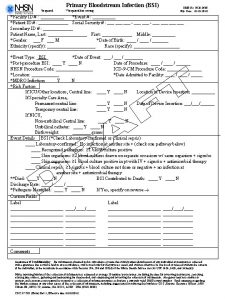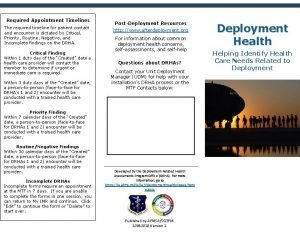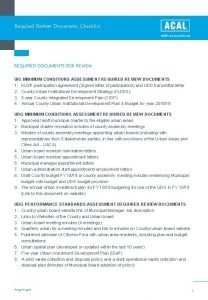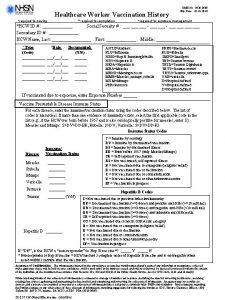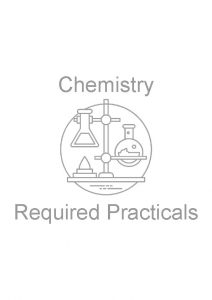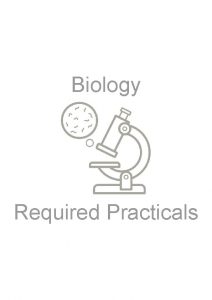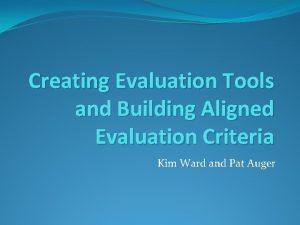INSTRUCTIONAL EVALUATION SYSTEM Evaluation Procedures and Criteria Required
















































- Slides: 48

INSTRUCTIONAL EVALUATION SYSTEM Evaluation Procedures and Criteria Required Annual Training


FLORIDA STATUTE 1012. 34 Personnel Evaluation Procedures and Criteria

EVALUATION SYSTEM REQUIREMENTS/ PROCEDURES FS 1012. 34 The evaluation system must: n Be designed to support effective instruction and student learning growth and the results must be used to develop district and school improvement plans.

EVALUATION SYSTEM REQUIREMENTS/ PROCEDURES FS 1012. 34 The evaluation system must: n Provide appropriate instruments, procedures, timely feedback, and criteria for continuous quality improvement of professional skills and must be used when identifying professional development.

EVALUATION SYSTEM REQUIREMENTS/ PROCEDURES FS 1012. 34 The evaluation system must: n Be based upon the performance of students assigned to the classroom of instructional personnel.

EVALUATION DEFINITION An evaluation is the summative compilation of evidence gathered over time from multiple observations, to include walkthroughs and formal and informal observations. Evidence is also gathered via artifacts, documents and the Deliberate Practice Plan. An evaluation is NOT a one-time observation and conference.

EVALUATION COMPONENTS n Instructional Practice (65% of the evaluation score) n Student Performance (35% of the evaluation score)

INSTRUCTIONAL PRACTICE Comprises 65% of the evaluation score and is based upon the Marzano Framework / Model

MARZANO FRAMEWORK n Is the research-based model developed by Dr. Robert Marzano. The model defines 60 elements of teacher practice and those elements are organized into four (4) “domains. ” n Each element has a description, examples of teacher and student evidence, and a rubric that differentiates the degree of quality of the teacher’s expertise and use of the element.

COMMON LANGUAGE OF INSTRUCTION ALIGNS SYSTEMS MISALIGNED SYSTEM No Common Language or Model of Instruction 11 ALIGNED SYSTEM Common Language or Model of Instruction

One of the greatest barriers to school improvement is the lack of an agreed upon definition of what high quality instruction looks

A COMMON LANGUAGE OF INSTRUCTION n It is a well-articulated knowledge base that describes the complexity of teaching and describes key strategies revealed by the research to have a high probability of impacting student learning. n It also describes the instructional context for appropriate use of instructional strategies that have the highest probability for raising student achievement. The common language represents what a school or district defines as effective

A COMMON LANGUAGE OF INSTRUCTION n A common language enables teachers to engage in professional conversations aimed at improving student achievement. n For administrators, a common language provides the means to offer focused formative and summative feedback. It supports administrators in making decisions regarding professional development, coaching and support for new or struggling teachers.

MARZANO FRAMEWORK n The protocol for classroom teachers is comprised of 4 domains. n Domain 1 – Classroom Strategies and Behaviors is comprised of 41 strategies and comprises 60% of the instructional practice score. n Domain 2 – Planning and Preparing comprises 20% of the instructional practice score.

MARZANO FRAMEWORK Cont. n Domain 3 - Reflecting on Teaching comprises 10% of the instructional practice score. n Domain 4 – Collegiality and Professionalism comprises 10% of the instructional practice score.

Domain 1: Classroom Strategies and Behaviors (41 of the 60 elements) Involving Routine Events 17 Addressing Content Enacted on the Spot

Domain 2 Planning and Preparing For Lessons and Units For Use of Resource s and Technolo gy For the Needs of English Languag e Learners For The Needs of Students Receiving Special Education For Needs of Students Who Lack Support for Schooling

Domain 3: Reflecting on Teaching Evaluating Personal Performance 19 Developing and Implementing a Professional Growth Plan (Deliberate Practice Plan)

Domain 4: Collegiality and Professionalism Promoting a Positive Environment 20 Promoting Exchange of Ideas and Strategies Promoting District and School Development

MARZANO FRAMEWORK Cont. n The protocol for non-classroom instructional personnel (NCIPs) is comprised of 4 domains. n Domain 1 – Instructional Support Strategies and Behaviors comprises 60% of the instructional practice score. n Domain 2 – Planning and Preparing comprises 20% of the instructional practice score.

MARZANO FRAMEWORK Cont. n Domain 3 - Reflecting on Job Responsibilities comprises 10% of the instructional practice score. n Domain 4 – Collegiality and Professionalism comprises 10% of the instructional practice score.

NCIP Domain 1: Instructional Support Strategies and Behaviors Establishing and Communicating Learning, Social, Behavioral, or Physical Goals Aligned with Student, Staff, School, or District Needs Facilitating Engagement

NCIP Domain 2 Planning and Preparing For Implementatio n of Goals and Objectives For Use of Resource s and Technolo gy For Needs of English Languag e Learners For Needs of Students Receiving ESE Services For Needs of Students Who Lack Support for Schooling

NCIP Domain 3: Reflecting on Job Responsibilities Evaluating Personal Performance Developing and Implementing a Professional Growth Plan (Deliberate Practice Plan)

NCIP Domain 4: Collegiality and Professionalism Promoting a Positive Environment Promoting Exchange of Ideas and Strategies Promoting District and School Development

Element Ratings and Descriptions GENERIC SAMPLE SCALE FOR ALL ELEMENTS/STRATEGIES DOMAIN 1 (See each element-specific scale and Desired Effect in i. Observation) NOT USING (1) Strategy was called for or needed in order to impact student learning, but was not exhibited or used • • • BEGINNING (2) DEVELOPING APPLYING INNOVATING (3) (4) (5) Uses the strategy Adapts, modifies, Uses the strategy and is effectively and or creates new strategy but consciously monitors the strategies for incorrectly or skilled in doing majority of students’ unique student with phases or so, but is understanding or needs and parts missing focused on own learning to situations by actions, not determine if monitoring ALL student results; strategy is having students to ensure does not the desired effect the strategy is monitor for on student having the desired student understanding. effect on all understanding THIS IS THE students’ or effect TARGET LEVEL. understanding. DEVELOPING Rating: 0% (none) to less than the majority of students (0% – 50%) are monitored APPLYING Rating: majority, but not all (51% - 99%) of students are monitored INNOVATING Rating: ALL students (100%) are monitored

i. Observation n A technology platform and system used for recording observation data by administrators, giving feedback, providing collaboration, documenting supportive evidence, and accessing professional development resources. n Under the “Resource Tab” teachers and NCIPs can find many resources, print and video, to deepen their understanding of the domains and elements/strategies.


NUMBER AND DESCRIPTION OF OBSERVATIONS Each Evaluation Cycle is comprised of : n One (1) Walkthrough (3 to 10 minutes) Unannounced. n Two (2) Informal Observations (10 minutes or more) – Announced or Unannounced n One (1) Formal Observation (30 minutes or more) – Announced or Unannounced.

NUMBER AND DESCRIPTION OF OBSERVATIONS Cont. n By Statute, the individual responsible for supervising the employee must evaluate the employee’s performance.

NUMBER OF EVALUATION CYCLES n Two (2) for classroom teachers in their first year of employment in the district or returning to employment in the district after a break in service. n One (1) for all other instructional personnel, except instructional personnel on a Professional Development Plan.

NUMBER OF EVALUATION CYCLES Cont. n All other instructional personnel includes classroom teachers not new to the district or those who are returning from a leave of absence of one (1) year or less, or were reduced in force and were placed within the following school year, or were terminated and were reemployed at the beginning of the following school year and all non-classroom instructional personnel.

OBSERVATION AND EVALUATION DEADLINES n Midpoint Observations for classroom teachers new to the district – Completed by December 15 th. n Final Observations for classroom teachers new to the district and all other instructional personnel – Completed by March 15 th.

STUDENT PERFORMANCE Comprises 35% of the evaluation score

STUDENT PERFORMANCE Cont. FS 1012. 34 states the following : n “Instructional personnel and school administrator performance evaluations must be based upon the performance of students assigned to their classrooms or schools…” n “Each school district shall measure student learning growth using the formulas approved by the commissioner…. . for courses associated with the statewide, standardized assessments…. ”

STUDENT PERFORMANCE Cont. FS 1012. 34 further states: n “For grades and subjects not assessed by statewide, standardized assessments, each school district shall measure student performance using a methodology determined by the district. ”

STUDENT PERFORMANCE Cont. n n n NCSB’s methodology includes teachermade tests and district selected tests, which includes state assessments. District selected tests include, the SAT 10, FAA, CELLA, ULSA, AP Exams, TABE and Industry Certifications, etc. See Appendix 10 of the Instructional Evaluation System located on the Personnel Department’s webpage for more information.

WHAT IS A VALUE-ADDED MODEL (VAM)? n n It is a statistical model that uses studentlevel growth scores to differentiate teacher performance in the area of student learning growth. Florida chose a covariate adjustment model that factors in certain student characteristics that serve to level the playing field by accounting for differences in the proficiency and characteristics of students assigned to teachers.

FACTORS IN FLORIDA’S VALUE-ADDED MODEL Up to 2 years of prior achievement scores n Number of subject relevant courses n Disability status n English Language Learner (ELL) status n Gifted status n Mobility n Attendance n Difference for modal age n Class size n Homogeneity of prior test scores For more information on VAM, visit the following site: http: //www. fldoe. org/teaching/performanceevaluations n

REQUIRED PERFORMANCE LEVELS As per Statute, the evaluation performance levels are: n Highly Effective n Needs Improvement / Developing (“Developing” will be used for instructional personnel in first 3 years of employment, as applicable, in lieu of “Needs Improvement” n Unsatisfactory

PROCEDURAL OVERVIEW n n n Per Statute, the person responsible for supervising the employee must evaluate the employee. The administrator conducts the required number of observations (1 Walkthrough, 2 Informal Observations, and 1 Formal Observation). Prior to each announced formal observation, pre-observation information may be requested, utilizing the Planning Conference / Pre. Observation Form.

PROCEDURAL OVERVIEW Cont. n n n The administrator conducts a postobservation conference with the employee within 10 days of completion of the final formal observation of Domain 1. During that meeting, the observation results and ratings, for all 4 domains, are discussed and the Annual Evaluation Report is completed. The signed, original Annual Evaluation Report is sent to Personnel. This normally takes place at the end of the school year. Annual Evaluation reports completed for mid-

PROCEDURAL OVERVIEW Cont. n n Concerns or unsatisfactory performance that may result in a Developing / Needs Improvement or Unsatisfactory rating of the Instructional Performance Score must be documented on the Notification of Less Than Effective Performance Form, prior to the evaluation taking place. This form must be given to the employee in sufficient time, prior to the formal evaluation, IF POSSIBLE, so as to provide the employee with time for improvement.

PROCEDURAL OVERVIEW Cont. n n This requirement does not pertain to student performance data, teacher misconduct or lack of adherence to safety concerns. See Appendix 6 – Notification of Less than Effective Performance For Instructional Personnel Form.

PROCEDURAL OVERVIEW Cont. n n n When current year student performance data becomes available, the Final Summative Evaluation Form, which includes both the instructional practice score and the student performance score, is completed and discussed with the employee. The signed, original Final Summative Evaluation Form is sent to Personnel. The signature of the employee only serves to acknowledge that the form has been read and that it has been discussed with the employee. It does not necessarily indicate agreement with its content.

PROCEDURAL OVERVIEW Cont. n n Employees who receive an Unsatisfactory rating will be placed on a Professional Development Plan. The employee has the right to submit a written response to the evaluation, and the response will be placed in his/her permanent record file in Personnel.

 Instructional procedures examples
Instructional procedures examples Instructional materials evaluation tool
Instructional materials evaluation tool Evaluation tool for instructional materials
Evaluation tool for instructional materials Web application firewall evaluation criteria
Web application firewall evaluation criteria Solution evaluation criteria
Solution evaluation criteria Kaizen evaluation
Kaizen evaluation Criteria for evaluating reference sources
Criteria for evaluating reference sources Iimarch briefing example
Iimarch briefing example Response evaluation criteria in solid tumors (recist)
Response evaluation criteria in solid tumors (recist) Evaluation criteria for aes
Evaluation criteria for aes Erp selection methods and criteria
Erp selection methods and criteria Spatial multi criteria evaluation
Spatial multi criteria evaluation Nursing theory evaluation criteria
Nursing theory evaluation criteria Channel evaluation criteria
Channel evaluation criteria Evaluation criteria for case study presentation
Evaluation criteria for case study presentation Trainer evaluation criteria
Trainer evaluation criteria Key supplier evaluation criteria
Key supplier evaluation criteria Key supplier evaluation criteria
Key supplier evaluation criteria Dick and carey instructional design
Dick and carey instructional design Concept of instructional technology
Concept of instructional technology Using and evaluating instructional materials
Using and evaluating instructional materials Bsbhrm506 assessment answers
Bsbhrm506 assessment answers Receiving and storing
Receiving and storing Requirement of pharmacist in hospital
Requirement of pharmacist in hospital What skills and personnel qualities are required?
What skills and personnel qualities are required? Laws governing medicare parts c and d
Laws governing medicare parts c and d Task analysis instructional design
Task analysis instructional design Computer sic
Computer sic Objectives of micro teaching pdf
Objectives of micro teaching pdf Maximizing instructional time in the classroom
Maximizing instructional time in the classroom Instructional hierarchy
Instructional hierarchy Marzano's 9
Marzano's 9 The diamond model of curriculum development
The diamond model of curriculum development Instructional design authoring tools
Instructional design authoring tools Marzano high yield instructional strategies
Marzano high yield instructional strategies Instructional aids examples
Instructional aids examples Dynamic instructional design model
Dynamic instructional design model Definition of instructional technology
Definition of instructional technology Example of educational media center
Example of educational media center Thought stopping
Thought stopping Visual instructional materials
Visual instructional materials Self-instructional training example
Self-instructional training example Instructional materials examples
Instructional materials examples Components of an instructional plan
Components of an instructional plan Technique definition
Technique definition Ccccio conference
Ccccio conference Chief instructional officers california community colleges
Chief instructional officers california community colleges Disadvantage of assure model
Disadvantage of assure model Conclusion of educational objectives
Conclusion of educational objectives
